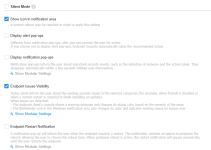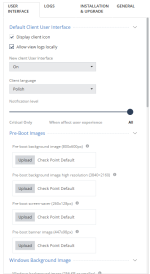IceMan7
Level 3
- Mar 19, 2025
- 140
Thanks for the replies. I've been using Quad9 for years, even when it was part of Fsecure.
I often follow the Polish website www.avlab.pl
Let's look at the test of this thread. In the video, time 9:16. @Shadowra unpacks the crack from a password-encrypted packed file. Eset responds with its "threat removed" pop-up and we see two more windows on the Windows screen. One looks like a command line and the other is a Windows "error" "Windows cannot find keygen...."
Next, we have Bitdefender and we see it differently. Time 15:06. Unpacking the crack and we only have a BD pop-up that notifies about the sample being blocked. Only the command line window flies by very quickly and the task is over. There is no Windows "error" with information in the pop-up.. What does it mean that it's the same sample but a different reaction? I'm trying to understand the detection mechanism.
However, now I also see a difference in web protection. I didn't notice it before. Not only is Eset faster in scanning, but in my opinion it does it better. Pages are blocked very quickly and we don't even have a pop-up Eset. BD downloads something and practically every page we have information in a pop-up that something has been blocked. In my opinion Eset does it much much better.
I often follow the Polish website www.avlab.pl
I think we didn't quite understand each other.In this test, I see that ESET handled everything automatically. It usually asks for users' permissions for PUA detection. There are many legit tools that are can be considered to be a potentially unwanted app. Many of those are often used for malicious purposes. ESET ask for your permission to decide what to do with them.(.......)
BD's philosophy is 100% automatic protection. So, they don't detect legit apps like that. In the home version they only detect what they considered to be actual PUAs which sometimes may not match with other product's detection criteria. BD's PUA detection is not the best. In BD Enterprise edition many such tools are detected
Let's look at the test of this thread. In the video, time 9:16. @Shadowra unpacks the crack from a password-encrypted packed file. Eset responds with its "threat removed" pop-up and we see two more windows on the Windows screen. One looks like a command line and the other is a Windows "error" "Windows cannot find keygen...."
Next, we have Bitdefender and we see it differently. Time 15:06. Unpacking the crack and we only have a BD pop-up that notifies about the sample being blocked. Only the command line window flies by very quickly and the task is over. There is no Windows "error" with information in the pop-up.. What does it mean that it's the same sample but a different reaction? I'm trying to understand the detection mechanism.
However, now I also see a difference in web protection. I didn't notice it before. Not only is Eset faster in scanning, but in my opinion it does it better. Pages are blocked very quickly and we don't even have a pop-up Eset. BD downloads something and practically every page we have information in a pop-up that something has been blocked. In my opinion Eset does it much much better.




